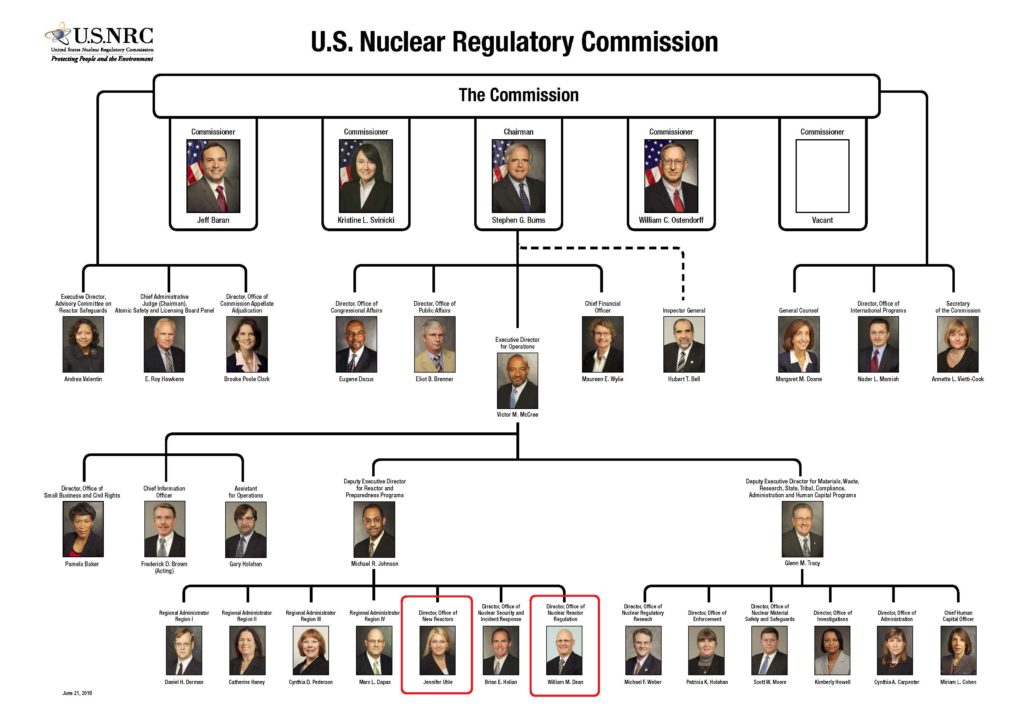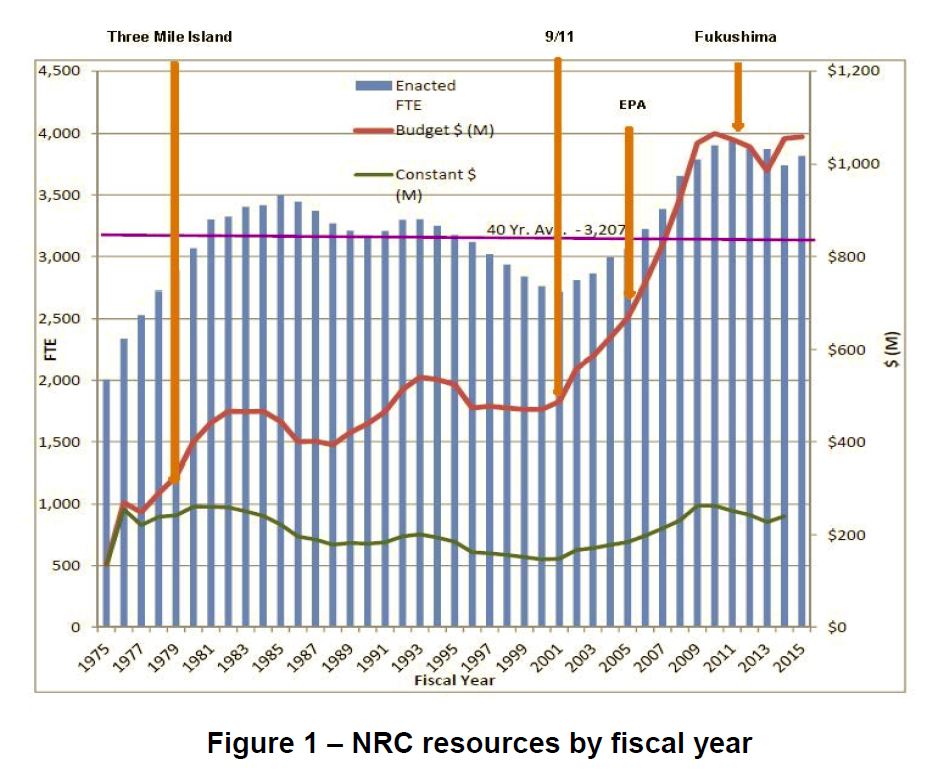There’s talk (and writing) of another nuclear merger in the United States.
Sixteen years ago, the Nuclear Regulatory Commission (NRC) approved the transfers of the operating licenses for PECO Energy’s reactors and of the operating licenses to Commonwealth Edison’s reactors to Exelon Generation Company, the corporation formed by a merger of those two companies. Decades earlier, the NRC approved the transfer of the operating licenses for the Point Beach Unit 1 and 2 reactors from Wisconsin Michigan Power Company to Wisconsin Electric Power Company, the corporation formed by a merger. More recently, the NRC approved the transfers of the operating reactors for Progress Energy’s reactors to Duke Energy Corporation, the company formed by the merger of Progress Energy and Duke Energy. (Progress Energy had been formed as the Carolina Power & Light Company but changed its name, perhaps to one more merger-friendly.)
These examples are far from an unabridged listing of mergers and acquisitions in the U.S. nuclear power industry. This post isn’t about the past. The excitement and the buzz is all about the rumors and suppositions regarding the most recently proposed merger—the NRC’s Office of Nuclear Reactor Regulation (NRR) with the NRC’s Office of New Reactors (NRO).
NRR + NRO
You won’t read about this proposed nuclear merger in the Wall Street Journal or see it covered on CNN, Fox News, MSNBC or even local cable-access programming. It’s not because no one cares about the proposed merger. Okay, so it’s not primarily because no one cares about the proposed merger. It’s because the proposed merger, if consummated, affects no one’s life in any way whatsoever, except for a few NRC employees.

Fig. 1 NRR and NRO are circled. UCS includes the Office of the Inspector General among the NRC offices, although it is not explicitly shown as an office in this chart. (Source: Nuclear Regulatory Commission annotated by UCS)
NRR and NRO are two of the NRC’s fourteen offices (eighteen offices if you count the four NRC regional offices as offices). If the merger is approved, it would streamline the NRC down to only thirteen, or seventeen, offices—a marginally smaller bureaucracy.
According to the NRC, NRR is “responsible for accomplishing key components of the NRC’s nuclear reactor safety mission.” (Makes one wonder what all the other offices are responsible for doing.)
According to the NRC, NRO is “Responsible for accomplishing key components of the Nuclear Regulatory Commission’s nuclear reactor safety mission.” (Wonder curtailed; same boilerplate language used over and over.)
NRR and NRO both report to the NRC’s Deputy Executive Director for Reactor and Preparedness Programs. So, the merger would give this Deputy Executive Director fewer meetings to attend and fewer performance appraisals to write (although if the boilerplate web language is any clue, the latter reduction would only save a few seconds a year—but that savings over enough years adds up to several minutes.)
Why Merge NRR and NRO?
The NRC staff sent their Commission a paper recommending the merger of NRR and NRO. Figure 1 from that paper (Fig. 2 below) plotted the NRC budget and staffing levels since the agency was created back in 1975. (EPA is the Energy Policy Act passed in 2005.)

Fig. 2 (Source: Nuclear Regulatory Commission)
The ramp-up in budget and staffing levels after the EPA was enacted was not to get the NRC prepared to handle the rash of permanent reactor shut downs and decommissionings, but it sure came in handy as Crystal River 3, Kewaunee, San Onofre Units 1 and 2, and Vermont Yankee shut down and the closures of FitzPatrick, Pilgrim, Clinton, Quad Cities Units 1 and 2, and Diablo Canyon Units 1 and 2 were announced. No, the ramp-up was designed to accommodate the purported nuclear renaissance. If Watts Bar Unit 2 is counted, the nuclear renaissance amounted to five new reactors (only four if Watts Bar Unit 2 is not counted among them because its construction began before the NRC was even formed in 1975.)
Figure 4 from the NRC’s paper (Fig. 3 below) plots the staffing levels of NRR and NRO since 1988 and projected out to 2020. NRO was formed after the Energy Policy Act to handle the tsunami wave of contemplated new reactor licensing issues without distracting NRR from its focus on “accomplishing key components of the NRC’s reactor safety mission.”

Fig. 3 (Source: Nuclear Regulatory Commission)
NRR’s staffing level dropped nearly 150 full-time equivalents (FTEs) when NRO was formed. NRO initially opened with about 253 FTEs, so NRO was basically split off NRR. The NRR staffers who had been handling new reactor duties essentially performed those same tasks, but now on NRO letterheads.
In 2011, NRO had about 469 FTEs while NRR had about 563 FTEs. NRR was responsible for nearly 100 operating reactors; NRO was responsible for four, maybe five, real new reactors and a handful of rumored reactors.
It’s déjà vu all over again
So, it’s less of a merger of NRR and NRO than it is the end of the experiment over the past decade of seeing whether the nuclear renaissance warranted a separate office to handle all those new reactors. Apparently, NRR can handle four, maybe five, new reactors, especially given the flurry of old reactors permanently shutting down.
Why Not Merge NRO and NMSS?
The Office of Nuclear Material Safety and Safeguards (NMSS) has several responsibilities, including reactor decommissioning. With more reactors slated for decommissioning than for commencement of operation, the NRO staff’s vast experience with reactors that don’t split atoms seems a better match for NMSS’s role than for NRR’s role. It might be wiser to merge NRO with NMSS.
All I can recommend is to stay tuned out on this one.
